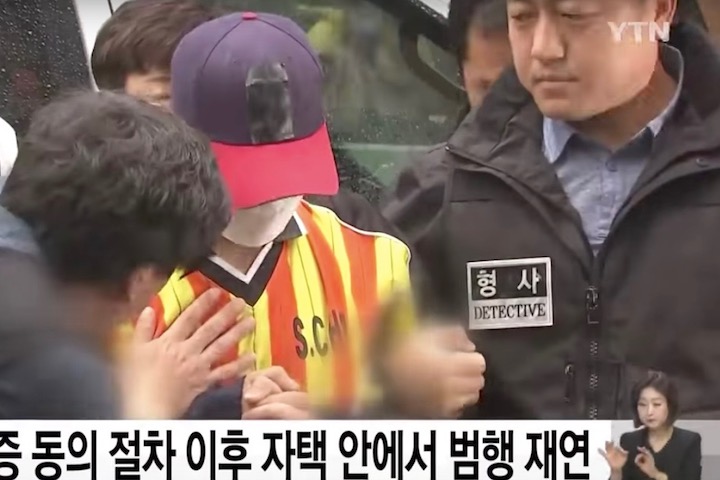
When Murder Investigation Becomes a Spectator Sport
The scene opens with a police officer shrouded under a dust mask and baseball cap. He brings a doll the size of a pubescent girl into a nondescript building on a rainy day. He carries the doll under his arm, the doll’s pink legs bobbing lifelessly as he passes an assembled crowd of reporters and onlookers.
After that, the murder suspect is led in by police officers, as onlookers shout, “Bastard!” According to cable channel JTBC, the suspect’s only response was, “I’m sorry.”
The occasion, on Wednesday, was a crime scene reenactment, an event where suspects walk police through specifically how they committed, or did not commit, a crime. The suspect in this case, Lee Young-hak, 35, is accused of drugging and then strangling to death a 14-year-old girl, a friend of Lee’s daughter, on Sep. 30.
Crime scene reenactments are ostensibly intended to get a clear record of just what took place in a crime. They are common in South Korea, but some legal experts have cast doubt on the reliability of evidence collected in this way. Attorney David Hennes has written that “videotaped crime scene reenactments contribute to the creation of unfair prejudice against criminal defendants.” A 2011 article on Slate argued that police in the U.S. use reenactments in part “to shame suspects in public.”
In Thailand, where crime reenactment also takes place with frequency, police have been accused of using the procedure to frame suspects when under pressure to make an arrest in a case.
Lee Young-hak’s crime scene reenactment, on Wednesday, in Seoul.
In South Korea, crime scene reenactments fall under the purview of Article 215 of the Criminal Procedure Act, which sets out standards for seizure, search and inspection of evidence. If there is “sufficient ground to believe a suspect committed the crime and has a recognizable connection to the case,” a prosecutor or police can obtain approval from a local district judge to conduct this judicial version of show-and-tell.
Except that it can go horribly wrong.
In a scene in the genre-bending 2003 film “Memories of Murder,” police officers working to solve the murder of a young woman hold a reenactment in an attempt to demonstrate the accused’s guilt, but the scene descends into chaos as children go running through the unsecured crime scene and a tractor trundles over a newly discovered footprint.
That movie is based on the story of South Korea’s first known serial killer case — ten unsolved rapes and murders that took place between 1986 and 1991. In some of these cases, female victims were strangled with their own pantyhose. The graphic nature of the crimes created massive public anxiety and put pressure on police to catch the perpetrator. In Bong’s film, the reenactment scene is used to show the investigation as a public spectacle, and to demonstrate the extent police are willing to go to arrest someone, anyone, regardless of evidence.
Left-leaning online news site MediaToday reported in September 2012 that a reenactment of a rape case that same month in Naju, South Jeolla Province, amounted to “pandemonium and a public execution” of the suspect. There had been more than 100 journalists, angry neighborhood residents and no police line on the scene to separate the crowd from the suspect and officers accompanying him.
As for Lee, he has not officially denied the charges against him.
Cover Image: Lee Young-hak’s crime scene reenactment, on Wednesday, in Seoul (Source: YTN)

